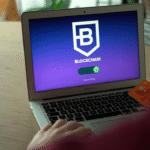The digital age has ushered in a new era of investment opportunities. From Bitcoin to Altcoins and DeFi platforms to the integration of real-world assets, the landscape of digital assets is vast and continually evolving. This comprehensive guide will delve into the intricacies of investing in digital assets, focusing on the risks, rewards, and strategies associated with this burgeoning field. Whether you’re a seasoned investor or just starting, you’ll find valuable insights to navigate the complex world of digital investments.

Understanding Digital Assets
Digital assets encompass a wide range of investment opportunities, from cryptocurrencies like Bitcoin and Altcoins to tokenized real-world assets and decentralized finance (DeFi) platforms. Each category offers unique benefits and risks, making it essential to understand their nuances before diving in.
Bitcoin: The Pioneer of Digital Currency
Bitcoin, the pioneering and most famous cryptocurrency, is often equated with digital assets. Introduced in 2009 by the pseudonymous Satoshi Nakamoto, Bitcoin functions on a decentralized network, offering a peer-to-peer system for value transfer without the need for intermediaries.
Advantages of Investing in Bitcoin
Store of Value: Bitcoin has a limited supply of 21 million coins. This scarcity drives its value, making it an attractive store of value.
Liquidity: As the most widely recognized cryptocurrency, Bitcoin is highly liquid, allowing investors to buy and sell it easily.
Security: Bitcoin’s blockchain technology provides robust security, ensuring the integrity of transactions.
Adoption: Increasing adoption by businesses and financial institutions enhances Bitcoin’s legitimacy and potential for long-term growth.
Risks of Investing in Bitcoin
Volatility: Bitcoin’s price can be extremely volatile, leading to significant fluctuations in value.
Regulatory Uncertainty: Regulatory changes can impact Bitcoin’s value and usability.
Security Risks: While Bitcoin’s blockchain is secure, individual wallets and exchanges can be vulnerable to hacks.
Altcoins: Diversifying Beyond Bitcoin
Altcoins, or alternative cryptocurrencies, offer investors additional options beyond Bitcoin. These include Ethereum, Ripple (XRP), Litecoin, and thousands of other digital currencies. Each Altcoin serves different purposes and functions within the digital ecosystem.
Popular Altcoins and Their Uses
Ethereum (ETH): Renowned for its smart contract capabilities, Ethereum allows developers to create decentralized applications (dApps) on its network.
Ripple (XRP): Designed for fast and low-cost cross-border payments, Ripple aims to revolutionize international transactions.
Litecoin (LTC): Created as a “lighter” version of Bitcoin, Litecoin offers faster transaction times and lower fees.
Cardano (ADA): Focuses on scalability, sustainability, and interoperability, making it a robust platform for dApps and smart contracts.

Advantages of Investing in Altcoins
Innovation: Many Altcoins offer innovative features and use cases that go beyond Bitcoin’s capabilities.
Potential for High Returns: Early investment in promising Altcoins can yield significant returns.
Diversification: Investing in Altcoins allows for portfolio diversification, reducing reliance on Bitcoin.
Risks of Investing in Altcoins
Market Volatility: Like Bitcoin, Altcoins can be highly volatile.
Regulatory Risks: Altcoins are also subject to regulatory scrutiny, which can impact their value.
Project Viability: Not all Altcoins succeed; some projects may fail, leading to losses for investors.
DeFi Platforms: Revolutionizing Finance
Decentralized finance (DeFi) platforms use blockchain technology to recreate traditional financial services in a decentralized manner. These platforms offer services such as lending, borrowing, and trading without intermediaries, providing greater access and transparency.
Key DeFi Platforms
Uniswap: A decentralized exchange (DEX) that allows users to trade cryptocurrencies directly from their wallets.
Aave: A lending platform that enables users to lend and borrow various cryptocurrencies.
Compound: Another lending and borrowing platform that rewards users for providing liquidity.
Advantages of Investing in DeFi Platforms
High Returns: DeFi platforms often offer attractive yields on investments.
Accessibility: Anyone with an internet connection can access DeFi services, promoting financial inclusion.
Transparency: Blockchain technology ensures transparency and reduces the risk of fraud.
Risks of Investing in DeFi Platforms
Smart Contract Risks: Bugs or vulnerabilities in smart contracts can lead to significant losses.
Regulatory Uncertainty: The regulatory environment for DeFi is still evolving, posing potential risks.
Market Volatility: The value of assets in DeFi platforms can fluctuate widely.
Integrating Real-World Assets with Digital Investments
The tokenization of real-world assets involves converting physical assets, such as real estate, commodities, or art, into digital tokens on a blockchain. This process provides investors with new opportunities to invest in tangible assets through a digital medium.

Benefits of Tokenizing Real-World Assets
The integration of real-world assets (RWAs) with blockchain technology through tokenization unlocks a range of exciting possibilities for investors. By representing ownership of physical assets as digital tokens on a secure, transparent ledger, tokenization offers several key advantages:
Fractional Ownership: Democratizing Investment in High-Value Assets
Traditionally, investing in high-value assets like real estate, fine art, or even rare collectibles has been limited to a select group of individuals or institutions with substantial capital. Tokenization disrupts this paradigm by enabling fractional ownership. A physical asset can be divided into smaller, tradable digital tokens, allowing investors to purchase a portion of the asset at a significantly lower cost compared to acquiring the entire asset outright.
This democratization of investment opens doors for a wider audience to participate in previously inaccessible asset classes. For example, a previously out-of-reach million-dollar piece of art could be tokenized into 1,000 digital tokens priced at $1,000 each. This allows a much larger pool of investors to own a stake in the artwork and potentially benefit from its appreciation in value.
Enhanced Liquidity for Traditionally Illiquid Assets
Many real-world assets are considered illiquid, meaning they are difficult to buy and sell quickly due to factors like high transaction costs, lengthy settlement times, and limited buyer pools. Tokenization tackles this challenge by creating a digital representation of the asset that can be easily traded on secondary markets. These secondary markets can operate 24/7, facilitating faster and more efficient transactions compared to traditional methods.
Imagine a scenario where a commercial property is tokenized. Traditionally, selling such a property would involve finding a qualified buyer, negotiating a price, and navigating a complex legal process. Tokenization allows the property to be divided into tradable tokens, similar to a company’s stock. These tokens can be readily bought and sold on a digital exchange, similar to how stocks are traded. This increased liquidity benefits both investors seeking to enter or exit the market and asset owners who can potentially sell their holdings more quickly and efficiently.
Improved Accessibility for a Broader Investor Base
Tokenization removes geographical and financial barriers that often hinder investment in certain asset classes. Traditionally, investing in real estate might require significant upfront capital, specific geographical proximity to the property, and potentially navigating complex regulations. Tokenization allows investors from anywhere in the world to participate in a global marketplace for fractional ownership of various assets. This opens doors for individuals with limited capital to build a diversified portfolio that includes previously inaccessible asset classes.

Furthermore, tokenization can improve efficiency and transparency in the investment process. Blockchain technology ensures a secure and immutable record of ownership, reducing the risk of fraud and streamlining administrative tasks. This can potentially lower overall transaction costs, making it even more attractive for a wider range of investors to participate.
Additional Considerations for Tokenized Real-World Assets
While tokenization offers numerous benefits, it’s important to acknowledge some key considerations. Regulatory frameworks for tokenized assets are still evolving, and investors should be aware of potential legal and compliance risks. Additionally, the value of a tokenized asset remains tied to the underlying real-world asset, and investors should conduct thorough due diligence on both the asset itself and the platform facilitating the tokenization process.
Despite these considerations, tokenization represents a significant innovation in the financial landscape. By unlocking fractional ownership, enhancing liquidity, and improving accessibility, tokenized real-world assets offer exciting opportunities for investors seeking to diversify their portfolios and tap into new investment avenues.
Risks of Tokenizing Real-World Assets
Regulatory Challenges: Navigating the regulatory landscape for tokenized assets can be complex.
Market Acceptance: The market for tokenized assets is still developing, which may impact liquidity and adoption.
Security Risks: Ensuring the security of tokenized assets and the platforms that support them is crucial.
Strategic Investment Techniques
To navigate the digital asset landscape effectively, investors should employ strategic techniques tailored to their goals and risk tolerance. Here are some recommended techniques for different types of digital assets.
Techniques for Bitcoin and Major Cryptocurrencies
Dollar-Cost Averaging (DCA): This technique involves regularly investing a fixed amount in Bitcoin or other major cryptocurrencies, regardless of price fluctuations. DCA reduces the impact of volatility and lowers the average cost of acquisition over time.
Hodling: A long-term investment strategy where investors hold onto their Bitcoin despite market fluctuations. The term “hodl” originated from a misspelled forum post and has become synonymous with long-term crypto investment.
Technical Analysis: Using charts and technical indicators to analyze price movements and make informed trading decisions. Technical analysis can help identify trends and potential entry and exit points.
Techniques for Altcoins
Research and Due Diligence: Conduct thorough research on Altcoin projects, including their whitepapers, development teams, and market potential. Investing in projects with strong fundamentals and use cases increases the likelihood of success.
Portfolio Diversification: Diversify investments across multiple Altcoins to spread risk. This approach minimizes the impact of a single Altcoin’s poor performance on the overall portfolio.
Staking: Many Altcoins offer staking rewards for holding and participating in their networks. Staking can provide additional income while supporting the network’s security and operations.
Techniques for DeFi Investments
Yield Farming: Providing liquidity to DeFi protocols in exchange for rewards. Yield farming can offer high returns but requires careful management to mitigate risks.
Insurance: Consider purchasing insurance for DeFi investments to protect against smart contract failures or hacks. Platforms like Nexus Mutual offer decentralized insurance solutions.
Risk Assessment: Continuously assess the risks associated with DeFi investments, including smart contract vulnerabilities, regulatory changes, and market volatility.
Techniques for Tokenized Real-World Assets
The burgeoning landscape of tokenized real-world assets (RWAs) presents both exciting opportunities and unique challenges for investors. To navigate this market effectively, a strategic approach encompassing thorough due diligence, fractional investment strategies, and proactive liquidity management is crucial.
Conducting Rigorous Due Diligence
Before venturing into the world of tokenized RWAs, meticulous due diligence is paramount. This multi-pronged approach involves meticulously investigating the following aspects:
Underlying Asset Evaluation: A core aspect of due diligence involves thoroughly evaluating the intrinsic value of the real-world asset being tokenized. This evaluation should consider factors such as the asset’s market value, historical performance, the potential for appreciation, and any associated risks like property deterioration or market fluctuations. In the case of tokenized real estate, factors like location, property type, and projected rental income should be carefully analyzed. For tokenized art, historical auction records, artist reputation, and the overall art market climate are important considerations.
Tokenization Platform Scrutiny: The security and regulatory compliance of the tokenization platform are equally critical. Investors should research the platform’s reputation, track record in security protocols, and adherence to relevant regulations. A reputable platform should employ robust security measures to safeguard investor assets and ensure the integrity of the tokenization process. Furthermore, it’s essential to understand the legal framework surrounding tokenization and the associated investor rights and responsibilities.
Harnessing Fractional Investment
One of the most compelling benefits of tokenization is the ability to invest in fractions of high-value assets. This opens doors for investors to implement a diversification strategy by spreading their capital across a variety of tokenized assets. Here’s a closer look at how this strategy can be leveraged:
Portfolio Diversification: By allocating investments across multiple tokenized assets from different sectors (e.g., real estate, art, commodities), investors can mitigate risk associated with any single asset’s performance. For instance, an investor could choose to invest in tokens representing a fraction of ownership in a commercial property, a rare painting, or a gold bar. This diversification helps to reduce the overall portfolio risk compared to concentrating investments in a single tokenized asset.
Reduced Investment Minimums: Tokenization allows investors to participate in asset classes that were previously out of reach due to high entry points. For example, instead of requiring millions of dollars to purchase a piece of commercial real estate, investors can buy a smaller portion represented by a token at a significantly lower cost. This democratization of investment opens doors for individuals with limited capital to build a diversified portfolio encompassing previously inaccessible asset classes.
Navigating Liquidity Challenges
While tokenization offers increased liquidity compared to traditional methods of owning real-world assets, it’s important to acknowledge that the liquidity of tokenized assets can vary depending on the underlying asset and the specific tokenization platform. Here are some techniques for managing liquidity considerations:
Market Research & Liquidity Metrics: Before investing in any tokenized asset, investors should research the secondary market activity for that particular asset class and the specific tokenization platform. Metrics such as daily trading volume and bid-ask spreads can provide valuable insights into the liquidity of the tokens. Choosing platforms with a proven track record of high trading volume can help ensure more seamless buying and selling opportunities.
Investment Time Horizon: Tokenized RWAs are often considered long-term investments. Investors should be prepared to hold their tokens for a period of time to ensure sufficient market liquidity for selling. This is particularly relevant for tokenized assets representing less common asset classes, where secondary market activity might be lower.
Risks and Rewards of Digital Investments
Investing in digital assets offers significant potential rewards but also comes with inherent risks. Understanding these risks and rewards is crucial for making informed investment decisions.
Potential Rewards
The digital asset landscape presents a unique blend of risk and reward for investors. While inherent volatility requires a measured approach, the potential rewards can be significant. Let’s delve deeper into some of the key benefits of incorporating digital assets into a well-diversified portfolio.

Unlocking High Returns
Digital assets, particularly cryptocurrencies like Bitcoin, have captured headlines with their historical price surges. While past performance is not indicative of future results, the potential for high returns remains a compelling draw for investors. Here’s a breakdown of factors contributing to this potential:
Limited Supply & Scarcity: Certain digital assets, like Bitcoin, have a predetermined maximum supply programmed into their code. This scarcity can contribute to price appreciation as demand for the limited asset pool grows. Contrast this with traditional fiat currencies, which central banks can continuously print, potentially leading to inflation and a decrease in purchasing power.
Network Effects & Adoption: As the adoption of digital assets grows, their utility and value proposition can increase. Imagine a scenario where a new cryptocurrency gains widespread acceptance as a medium of exchange for online transactions. This increased network effect can drive up the demand for cryptocurrency and potentially lead to price appreciation.
Early-Stage Innovation: The digital asset ecosystem is constantly evolving, with new projects and applications emerging at a rapid pace. Investing in promising projects with strong development teams and innovative solutions can lead to significant returns if the project gains traction and adoption.
It’s crucial to remember that the high-return potential of digital assets comes with heightened volatility. Investors should be prepared for price fluctuations and conduct thorough research before investing in any digital asset.
Exposure to Innovation and Growth
Digital assets are at the forefront of technological innovation, disrupting traditional financial systems and paving the way for a more decentralized and efficient future. Here are some ways investors can benefit from this innovation:
Decentralized Finance (DeFi): DeFi platforms leverage blockchain technology to create peer-to-peer financial services, eliminating the need for intermediaries like banks. This opens doors for new lending, borrowing, and trading opportunities that were previously inaccessible to many investors.
Non-Fungible Tokens (NFTs): NFTs represent digital certificates of ownership for unique digital assets like artwork, collectibles, or even in-game items. This burgeoning market offers new avenues for investment and ownership, potentially unlocking value in previously untradeable digital assets.
The Future of Finance: Blockchain technology, the foundation of digital assets, has the potential to revolutionize various aspects of finance. From streamlined cross-border transactions to secure identity management, blockchain offers innovative solutions that can reshape the financial landscape. Investing in digital assets provides exposure to these burgeoning technologies and their potential for future growth.

Diversification and Risk Management
Digital assets offer a unique opportunity to diversify investment portfolios beyond traditional asset classes like stocks and bonds. This diversification can help mitigate overall portfolio risk and potentially improve risk-adjusted returns. Here’s a closer look at the benefits:
Low Correlation: Digital assets often exhibit a low correlation to traditional asset classes. This means that when stocks and bonds are experiencing a downturn, digital assets might not follow suit, potentially leading to a smoother overall portfolio performance.
Hedging Against Inflation: Certain digital assets, like Bitcoin, are often touted as a hedge against inflation. With a limited supply, they are not susceptible to inflation in the same way as fiat currencies. While the effectiveness of this hedge is still debated, it remains a potential benefit for investors seeking protection against rising inflation.
Hedging Against Geopolitical Instability: The decentralized nature of many digital assets can offer some protection against geopolitical instability that might affect traditional financial systems. This is because digital assets are not tied to any specific country or central authority.
Potential Risks
Volatility: Digital assets are known for their price volatility, which can lead to significant gains or losses.
Regulatory Uncertainty: The regulatory landscape for digital assets is still evolving, creating uncertainty and potential legal risks.
Security Concerns: Digital assets and platforms can be targets for hacks and fraud, requiring robust security measures.
The Future of Digital Asset Investing
The future of digital asset investing looks promising, with ongoing developments in blockchain technology, regulatory frameworks, and market infrastructure. Here are some trends to watch:
Institutional Adoption: Increasing interest from institutional investors is likely to bring greater legitimacy and stability to digital asset markets.
Regulatory Clarity: Clearer regulatory guidelines will help reduce uncertainty and foster a more secure investment environment.
Technological Advancements: Continued innovation in blockchain technology and DeFi platforms will create new investment opportunities and enhance existing ones.
Integration with Traditional Finance: The integration of digital assets with traditional financial systems will provide more accessible and diverse investment options.
Investing in digital assets, including bitcoin investment advice, altcoin investment options, DeFi platforms, and tokenized real-world assets, offers a dynamic and potentially rewarding opportunity for investors. By understanding the unique characteristics, risks, and rewards of each type of digital asset, you can make informed decisions and strategically build your portfolio.
At Kenson Investments, we specialize in providing tailored investment solutions for both new and seasoned investors. Our expert team is here to help you navigate the complexities of digital asset investing and achieve your financial goals. Whether you’re looking to invest in cryptocurrencies, explore DeFi opportunities like RWA defi, or integrate real-world assets into your portfolio through real asset tokenization, we have the expertise and resources to guide you every step of the way.
Ready to start your digital asset investment journey? Contact Kenson Investments today and discover how our comprehensive investment services, including bitcoin investment consultants, can help you build a robust and diversified portfolio. Our team is well-versed in comparing altcoins vs. major cryptocurrencies to ensure you make the best investment decisions.














